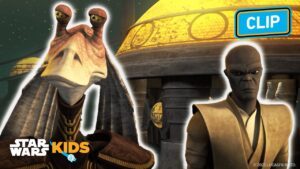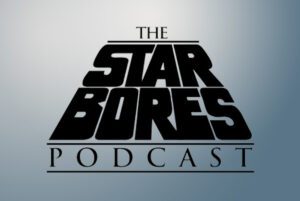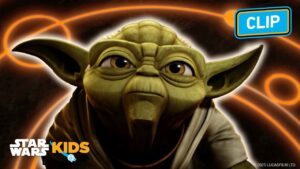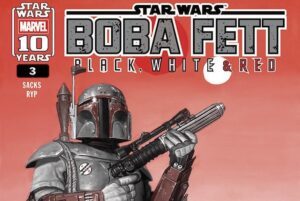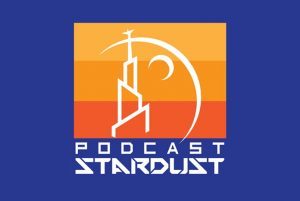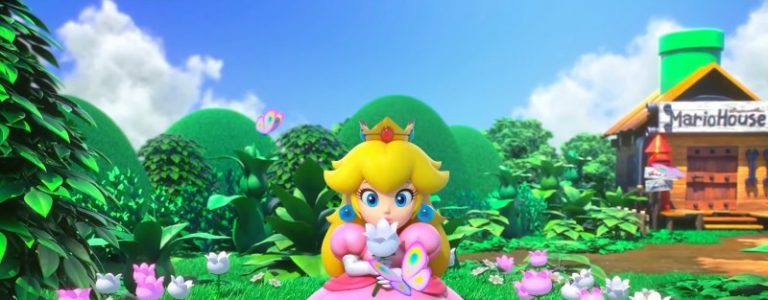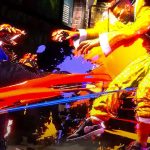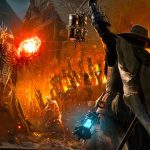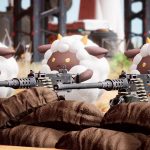Super Mario RPG is one of the wildest games in Nintendo’s catalog. Loaded with eccentric characters like a Santa-esque big bad, random bouts of dark comedy–Toad cosplayers tickle as a form of torture and a four-eyed dog swallows you whole and comments on the taste–and moment-to-moment gameplay that is as raucous as it is eclectic, Super Mario RPG memorably capped off the SNES lifecycle. Fittingly, the new Switch version is one of the weirdest remasters I’ve ever played. Its surface-level appearance as a modern Mario game is merely a facade. Relentlessly faithful to the original, Super Mario RPG is a bold and largely successful experiment.
In fact, it’s misleading to refer to Super Mario RPG as a remake, especially in a year where numerous remakes, such as Resident Evil 4 and Dead Space, have retooled beloved classics for modern sensibilities. Heck, I’d even say Super Mario RPG is closer to Metroid Prime Remastered. Yes, the graphics here were fully remade–this isn’t a touch-up; it’s a complete glow-up for contemporary eyes–but everything that gave the SNES game its identity is present. Outside of a few minor quality-of-life improvements, Super Mario RPG is mostly a remastered product of its time–and an utterly fascinating one, at that. With its heartfelt humor, standout personalities, satisfyingly straightforward combat, and an expeditious mindset devoid of the bloat that regularly plagues modern RPGs, Super Mario RPG is timeless.
Almost all truly great stories transcend time. When it comes to video games from the 16-bit era, narrative was often an afterthought. I was pleasantly surprised to see how well the writing in Mario’s debut role-playing holds up. Endearing characterization deftly builds a world that draws you into the overarching good versus evil story.
You know the drill: Bowser kidnaps Peach and foolishly thinks he’ll get away with it. While Mario attempts to save her, an enormous, lifelike sword plunges into Bowser’s Keep and severs the mythical wish-granting Star Road. With Bowser’s home now overrun by robot weapons crafted by Santa-lookalike blacksmith Smithy, it’s up to Mario to find the Star Pieces scattered across the Mushroom Kingdom and beyond. For the Switch release, Nintendo dropped the Legend of the Seven Stars subtitle of the SNES version, but this remains an adventure about restoring the natural order of the world.
As these things go, Mario jumps at the opportunity to vanquish evil, but he’s not alone in his quest. He’s accompanied by four allies who gradually join the party during the first half of the story. And what a cast of heroes it is. Franchise mainstays Bowser and Peach ditch their villainous and helpless princess roles, respectively, to take on the sweeping threat to the Mushroom Kingdom. Some of the best moments see Bowser slip and show his soft side and Peach champ at the bit to get in on the action. But it’s the two newcomers who play the most heartfelt roles. Initial companion Mallow is a fluffy little guy with a heart of gold, and his wholesome personality never failed to make me smile. I don’t want to say too much about the second companion, Geno, but he is introduced in one of the most adorable sequences in the Mario series. It’s one of numerous memorable moments enhanced by new cutscenes that are possible thanks to modern hardware.
The core cast gives Super Mario RPG its heart, while those you cross paths with color the world in all its zaniness. Many quirky characters dwell throughout the seven regions. I took great pleasure in playing “Frogfucius Suite #18” for Toadofsky, the most distinguished composer of his generation, by the waters of Tadpole Pond. Then I skipped over a row of friendly fish and received sage wisdom from Frogfucius, a philosopher who arguably has a top-three beard across all the lands. And they certainly enjoyed Mario’s company, too, because even though he’s wordless, Mario shows more personality here than in the vast majority of his games. Some of the most hilarious “conversations” see Mario mime tales from the road. He plays all the roles, physically transforming into other characters before your eyes. It’s expressive in a very un-Mario type of way, and the animations are so well done that you can practically hear him.
A darkly funny batch of villains counterbalance the sweet and silly personalities. A whole dissertation could be written on Booster, a man with a truly wild beard and eyeballs that are ever so close to falling out. Outside of looking for Mrs. Right and riding his toy train around his castle, Booster’s favorite form of entertainment is watching one of his lackeys juggle knives. This jester is aptly named Knife Guy–which is just perfect, no proper name needed. Then there’s the awkward union of Valentina, a woman with a bird for hair, and a giant bird named Dodo. Mario’s interaction with the couple is just one of the many layered story threads that include overt, surface-level humor and hilarious subtext.
It’s incredible how many standout characters and threads are neatly crammed into an adventure that took me roughly 17 hours to complete. And it’s especially noteworthy considering the energetic pace and wealth of activities that fill all of the gaps between story beats. Playing an RPG in 2023 with almost no preamble was so refreshing. You’re tossed into battle about a minute from the jump, and it carries on this breakneck pace until the credits roll.
Just like in the original game, touching an enemy kicks off the battle sequence. All these years later, the relatively rudimentary central conceit of the turn-based combat is continuously engaging. Pressing A right before impact executes an Action Command, timing-based bonuses that inflict extra damage. Many enemy attacks can be fully blocked or strongly mitigated with correct timing, too. The remaster adds a visual prompt (an exclamation point) that demonstrates the correct timing for each attack and block animation. It’s mainly a teaching tool rather than a crutch to lean on, as the prompt will disappear once you start achieving perfect timing with each unique move. Mario kicking a shell is different from swinging the hammer, and Bowser hurling his new buddy Mario doesn’t have the same sequence as swinging a Spiked Chomp.
Blocking successfully is a trickier feat due to the number of varying enemies scattered across the roughly 30 areas. When complete, the new Monster List in the journal contains more than 200 entries. From Mario staples like Dry Bones, Piranha Plant, and Wiggler to the Smithy Gang’s anthropomorphic weapons such as Pounder, Poundette, and Forkie–not to be confused with that trash from Toy Story who is actually a spork–Super Mario RPG packs an eclectic mix of foes. Since many enemies have unique attack animations, the Action Command prompt helps get you on the right track without compromising the integrity of battling. There are some attacks, mainly special moves and those that inflict status conditions, that cannot be blocked, though.
The plethora of timing-based sequences is a boon to what would otherwise be an effortless mechanic. And since many battles can be completed in under a minute, battle sequences resemble fun, action-packed puzzles. Executing well-timed attacks and blocks is satisfying despite being uncomplicated. It’s the combination of little things–charming animations, HP counters popping on screen, impact sounds, and the catchy battle music in the backdrop–that creates a fulfilling and repeatable loop.
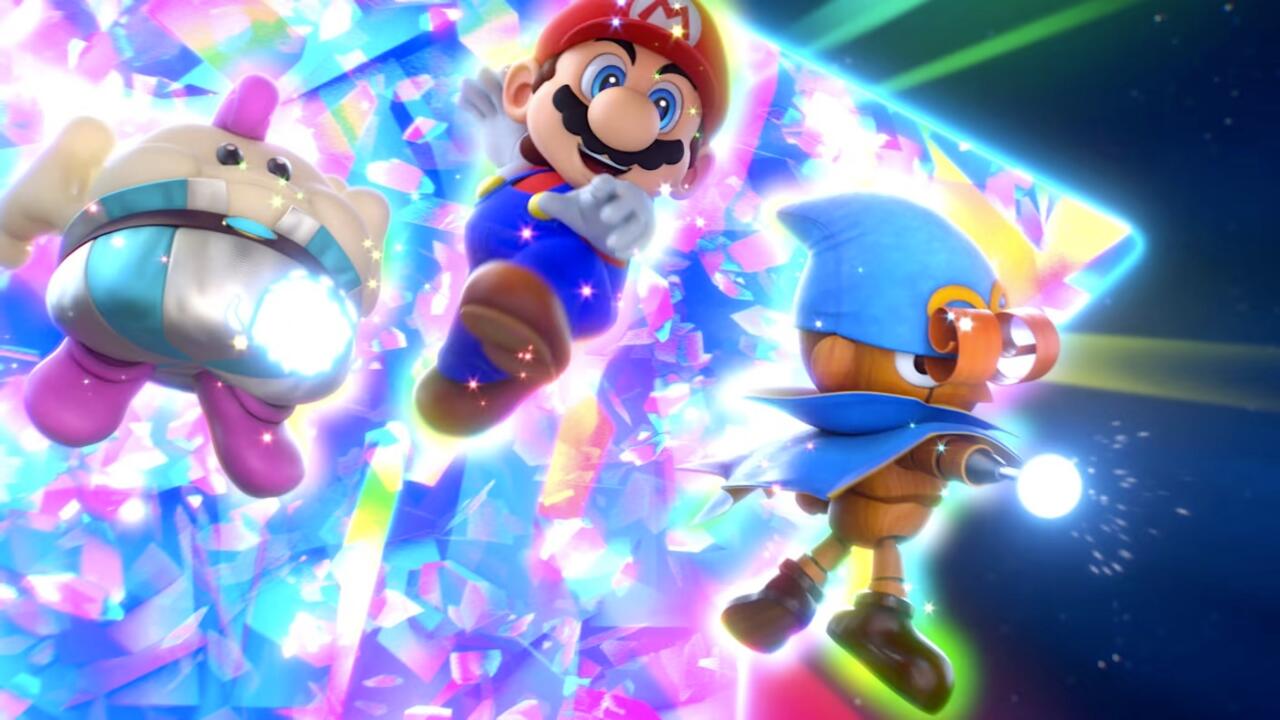
Gallery
It’s a testament to the strength of the predominant mechanic that the frivolousness and, at times, utter uselessness of the other battle components only has a marginally negative effect on the experience. To be blunt, Super Mario RPG is unbalanced. The scales tilt heavily in your favor and there’s little incentive to switch things up or option to increase the challenge. Timing boosts are tiered, with good timing dealing more damage to your target, and great timing creating an area-of-effect shockwave that deals bonus damage to surrounding enemies. Chaining together well-timed Action Commands temporarily raises your stats, too. These are new to the remaster and have overarching effects on other battle mechanics.
Each character has a steadily growing list of special moves. For instance, Mario can jump on enemies’ heads and hurl fireballs, Mallow can summon lightning strikes, and Geno shoots beams of energy. These have more nuanced animations with different Action Commands such as rapidly pressing A or twirling the analog stick. The issue is special attacks lose their, well, specialness due to ordinary moves often inflicting more damage. Plus, the area-of-effect bonus eliminates one of the key traits, multi-enemy damage, of some special moves. Considering most enemies are vulnerable to regular attacks, yet more of them are immune to specific elements, regular attacks become the definitively right choice.
Unfortunately, this logic extends to attack items that often deal less damage as well as the new Triple Moves. Chains of well-timed attacks fill the Action Gauge for powerful group attacks that vary based on your three-person party makeup. With Koopa Clown Car, for example, Mario, Bowser, and Mallow hit the skies in Bowser’s aerial vehicle and hurl a mix of fire, ice, and electricity. It’s capped off with a bomb exploding on your enemies. Considering how central timing is to battle, Triple Moves should be more impactful, but I never needed to think strategically about using them. The elaborate cinematics are certainly cool, but Triple Moves don’t turn the tables like similar features in other turn-based RPGs, such as summons in Final Fantasy.
Ironically, the lone exception to the impracticality of magic contributes massively to the combat imbalance. Multiple party members learn healing moves, with Peach acting as the de facto white mage to revive fallen allies and replenish health. Peach’s healing spells are wildly powerful, and they consume very few Flower Points (your magic gauge). With the correct timing–and the timing here is simple–Peach’s Group Hug spell can fully heal all three fighters. Even if you mess up, you’ll get a big chunk of HP back. Oddly, Peach has a Triple Move focused on healing, despite already having full healing powers. Though Peach doesn’t join the party for several hours, Mallow has a low-cost healing move, too. And if you’re low on Flower Points, it’s nearly impossible to run out of healing items, since they are handed out as battle rewards like candy (you find them in chests and can buy them from shops, too).
If you’re looking for a turn-based RPG where strategy and forethought are key to success, Super Mario RPG is decidedly not that kind of game. When I rolled credits after hundreds of battles, my party had been wiped exactly zero times. I wouldn’t say I’m highly skilled at turn-based RPGs; Super Mario RPG simply sets you up to succeed. Your party quickly becomes the Monstars, and your opponents, regardless of how menacing they may look, are Tweety and Porky Pig. Even late-game bosses have a hard time making a dent. Occasionally, bosses will hurl an unblockable special move that instantly knocks out one party member, but along with being rare, there’s typically a cooling-off period that provides ample time to heal. In many cases, it wouldn’t even be possible for a group of enemies to knock out your whole party before you take them out, regardless of timing, so healing isn’t even necessary.
For me, breezing through battles while chaining together perfectly timed attacks was a self-fulfilling endeavor. I didn’t fight everything in sight for the experience points, coins, item rewards, or the challenge. Much like runs of Vampire Survivors where I know I’m going to wreck everything in sight, Super Mario RPG’s combat loop is reliably fun. If there weren’t such a large pool of enemies, I could certainly see it becoming repetitive. Immense variety keeps things fun throughout, and some bosses, to their credit, have unique traits that do require a smidgen of strategy to lower their shields or nullify a pesky attack.
Nonetheless, combat balance is one area where Super Mario RPG falters. Enemies have the same HP and traits as they did in the SNES game, which is a degree of faithfulness that doesn’t gel with the new features. I wouldn’t blame it on the Action Command prompt, as that is a resource that helps make everything click. But the updated graphics and animations make everything clearer and smoother, which naturally increases the likelihood of repeating perfect Action Commands. But it’s a double-edged sword, as the area-of-effect bonuses, stat buffs, and Triple Moves earned from great timing significantly reduce the challenge. The original game was pretty easy, but the remaster is certainly more of a breeze. There is an optional easy mode that makes battles even friendlier, grants bonus experience points, and widens the Action Command window. It would’ve been nice to have the choice to tip the scales in the other direction to make combat choices more consequential. To this end, things do shift to the challenging side in the new post-game where you can revisit stronger versions of bosses like Booster and Punchinello.
Super Mario RPG is more than just a series of rapidly paced battles. All these years later, I’m still impressed by how many disparate ideas and activities are sandwiched into one masterful romp. One moment you’re playing Whac-A-Mole with Goombas, and the next you’re racing for cookies against Boshi, aka a Yoshi wearing sunglasses.
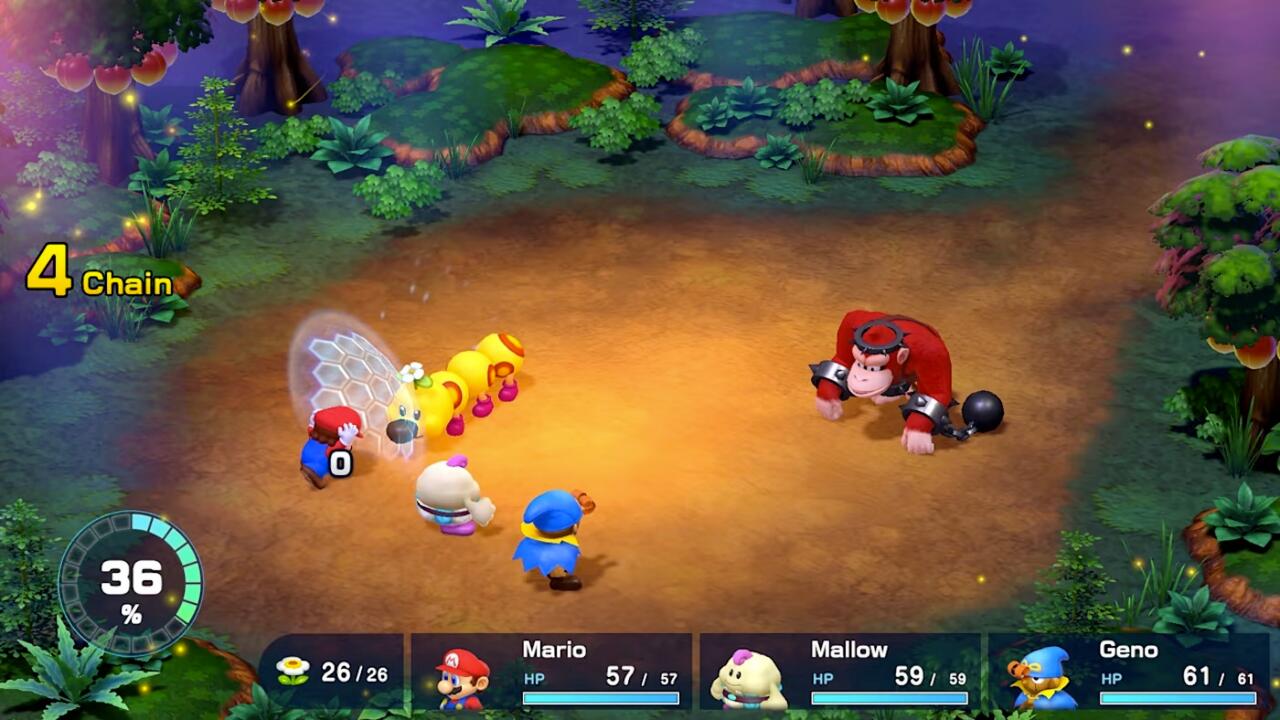
More than a dozen Mario Party-esque minigames are scattered throughout the seven regions. These minigames are often placed in refreshing segues between main objectives. Perfect examples of the easy to learn, hard to master mantra, they cover a wide-range of activities: careening down a waterfall, zipping around a chaotic railway, scaling a mountain using small Koopa Shells as platforms, the Kentucky Derby starring the thoroughbred known as Yoshi.
As it launched mere months before Super Mario 64, Super Mario RPG is, rather bizarrely, the first 3D Mario game with platforming. It’s not the main focus here, but there’s a fair amount of it. It’s more rudimentary than in a mainline Mario game, though there are some key sections where Mario’s world-famous jump is the focus.
Platforming, as well as movement in general, has a nostalgic charm to it. This isn’t the shifty Mario who can stop on a dime; it’s an era-accurate representation of his abilities. Mario has some heft to him that requires more deliberate jumps. It very much feels like the original game, especially since Super Mario RPG hails from a drastically different era. One nice quality-of-life addition is that the default control setting makes Mario run at all times instead of asking you to constantly hold down the Y button–if you must fully adhere to the past, you can use the classic control scheme.
Another carryover is the ability to revert the soundtrack back to the original. Super Mario RPG has an absolutely incredible soundtrack that captures the tone of the events unfolding on screen. Unsurprisingly, the modern version is more of an enhanced take on the original than a true departure. It adds layers to the classic tracks without compromising what was already pretty much perfect.
The dedication to authenticity is further exemplified by the level design and camera perspectives. Though it’s probably the least graphically intensive modern Mario game on Switch, it’s still a meaningful evolution. Lovely character designs and vibrant setpieces bring the memorable moments closer to modern standards. At the same time, Super Mario RPG looks just as it always has. There may be some slight differences here and there, but it’s largely a complete replica. You view the world from an isometric perspective with a fixed camera angle. Diorama-esque rooms appear like they are floating in a void, and many area entrances and exits look like sawed-off dead ends. Load times are practically nonexistent, save for a brief moment when going through doors.
While this degree of replication isn’t the norm for most enhanced rereleases, including other Nintendo classics on Switch like Link’s Awakening, it works quite well here. It has a pop-up book quality that draws you into its condensed environments and fosters an intimate atmosphere with little distractions. Each locale has a unique aesthetic: The Mushroom Kingdom has its trademark lush green forestry; Kero Sewers is appropriately dark and dreary; Booster Pass has its chiseled slabs of mountainous terrain; the Sunken Ship is eerie and isolating; and Rose Town’s idyllic charm is pulled to the surface.
Since it’s faithfully designed to closely resemble the original, it makes sense that it replicates the feel, too, warts and all. As a result, conventionally basic platforming sequences, especially ones with moving platforms, tend to be more challenging than they appear because of the tricky depth perception. Judging how far into the scene isn’t always obvious. The perspective combined with Mario’s weightier feel makes for a methodical platforming experience. I personally found the platforming quirks to be charming, as it forced me to rethink my approach. The inherent oddities of the old-school feel may not gel as well with those who don’t have nostalgia for Super Mario RPG and the SNES era in general, but it’s somewhat astonishing this game exists in this form.
When you jump from the world map into your next destination, your primary objective is never far away. Areas are generally small with rigid borders that seemingly limit how much you can explore off the beaten path. But the world is layered with small puzzles and asides. There technically aren’t any dungeons, but quests to retrieve Star Pieces have a tendency to resemble mini-dungeons thanks to a nice mix of combat, platforming sequences, and brain teasers that culminate in boss battles. There’s a great mix of puzzle types that keeps things fresh, from clever miniature mazes and platforming-focused puzzles to riddles and logic puzzles. Each individual Star Piece quest is markedly different from the last, and while it’s fairly lean on optional content, Super Mario RPG does have some very cool secrets and Easter eggs.
Super Mario RPG is one of the most interesting remasters I’ve ever had the pleasure of playing. Returning to 1996 and joining Mario and pals on this zany adventure that contributed greatly to my love of turn-based RPGs was a nostalgic joyride.
